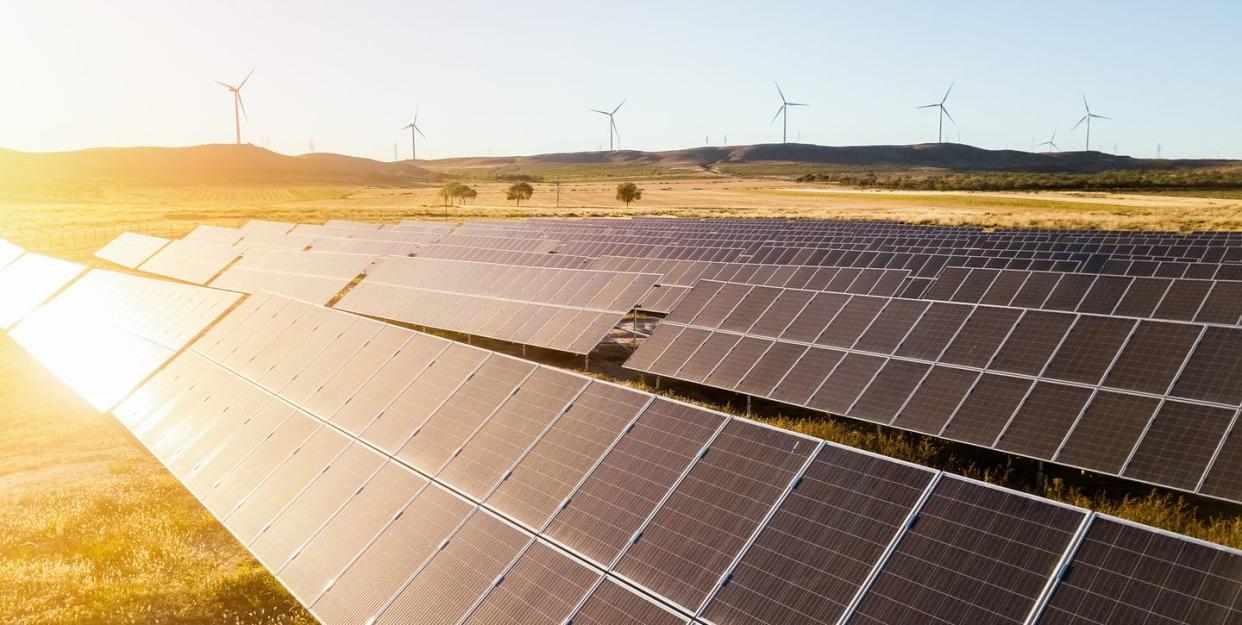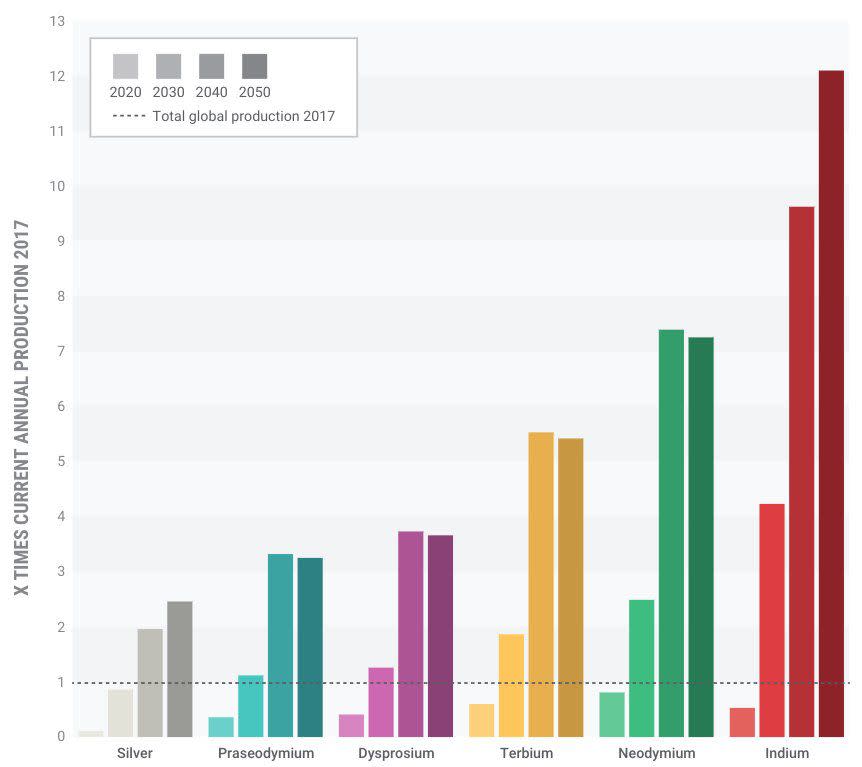We Might Not Have Enough Materials for All the Solar Panels and Wind Turbines We Need

If we want to stop climate change, we’ll have to stop pumping out carbon dioxide into the atmosphere. In order to do that, we’ll need to replace all the sources of carbon pollution-like fossil fuel plants and combustion vehicles-with clean, renewable alternatives. But there’s a problem: According to a new study, we might not have enough materials to make that happen.
Plenty of high-tech electronic components, like solar panels, rechargeable batteries, and complex circuits require specific rare metals. These can include magnetic neodymium, electronic indium, and silver, along with lesser-known metals like praseodymium, dysprosium, and terbium. These metals are mined in large quantities in countries around the world, and they make their way into the supply chains of all sorts of electronics and renewables companies.
A group of researchers from the Dutch Ministry of Infrastructure determined how many of these important metals will be required by 2050 in order to make enough solar panels and wind turbines to effectively combat climate change. With plenty of countries, states, cities, and companies pledging to go 100 percent renewable by 2050, the number of both solar panels and wind turbines is expected to skyrocket.
According to the analysis, turbines and solar panels might be skyrocketing a bit too much. Demand for some metals like neodymium and indium could grow by more than a dozen times by 2050, and there simply might not be enough supply to power the green revolution.

By 2050 solar panels and wind turbines will require around 12 times as much indium as the entire world produces right now, the analysis predicts. Neodymium production will have to grow by more than seven times, and silver will have to grow by nearly three times. And this is just for renewable energy; all of these metals have other uses in other industries, meaning mining will have to ramp up very quickly.
That’s a serious problem, because it takes a lot of time and money to open up a new mine. Often, it can take decades to get a new mining operation up and running, which means we could start seeing shortages of many of these crucial metals.
One possible solution is if we start learning to recycle. Many electronic devices today aren’t recycled in any way; instead, they show up in landfills nearly untouched. If we started recycling more high-tech components, perhaps we could actually have enough rare metals to go around by 2050.
Source: Motherboard
('You Might Also Like',)

